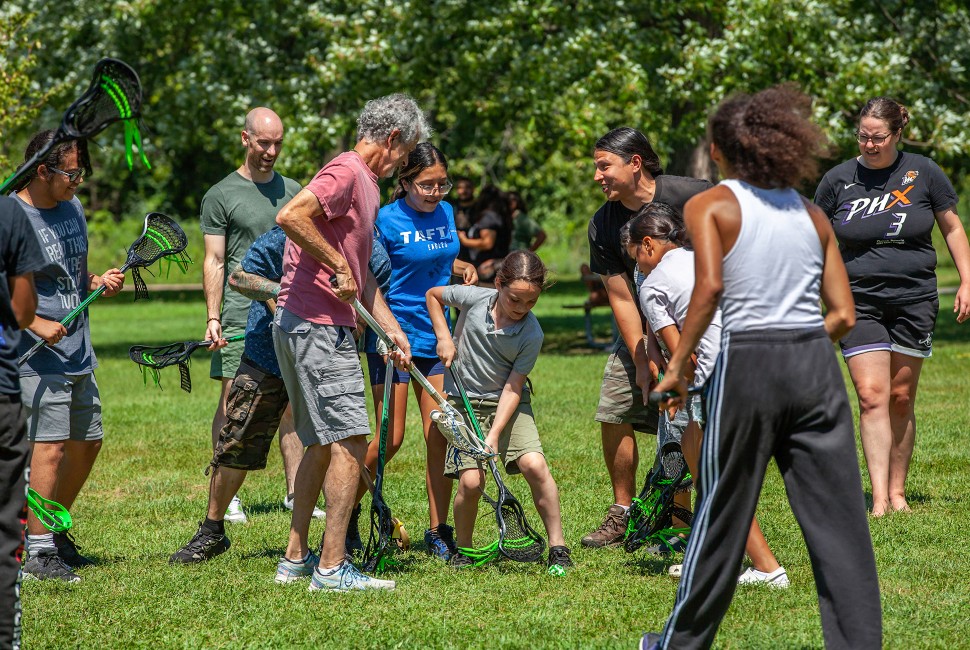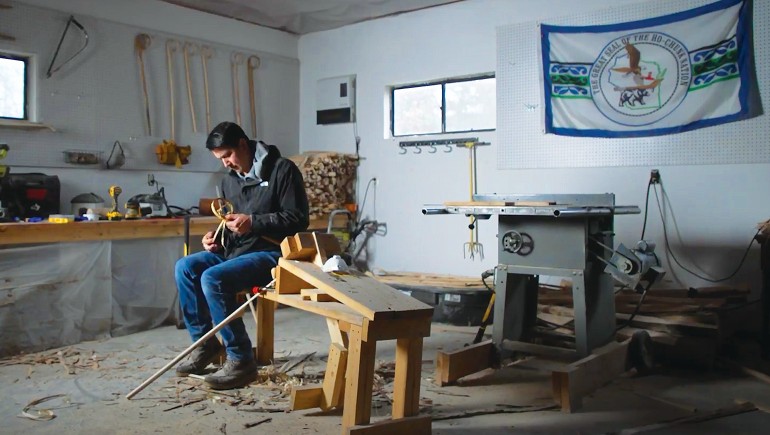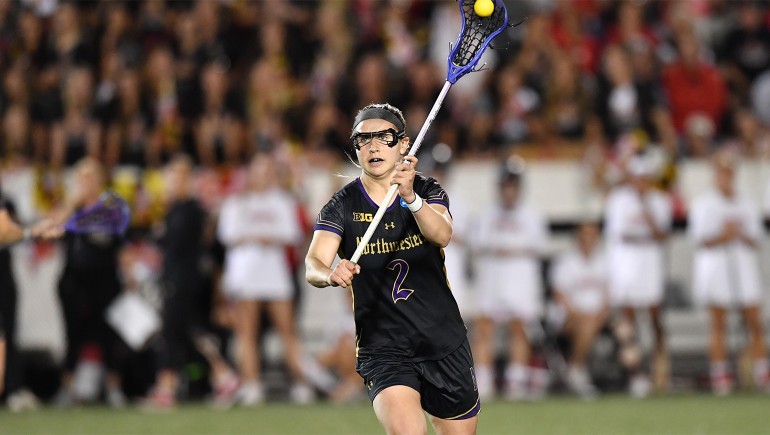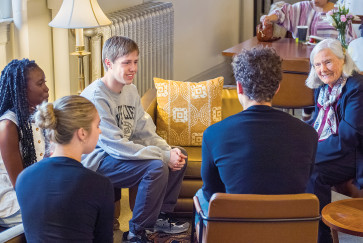Lacrosse is one of the fastest-growing sports in the U.S. today, but few people realize its Indigenous origins.
“The city of Chicago was essentially a great lacrosse field where Indigenous tribes of the region played against each other in games that lasted for days and included hundreds of players on a team,” said emeritus professor of journalism Patty Loew.
Loew is a citizen of Mashkiiziibii, the Bad River Band of Lake Superior Ojibwe, and inaugural director of the Center for Native American and Indigenous Research (CNAIR) at Northwestern.
The roots of lacrosse were obscured when European settlers outlawed Native Americans from playing it. Paradoxically, the settlers had embraced the sport and formed their own lacrosse clubs.
An exhibit at Chicago’s Field Museum, “The Creator’s Game,” seeks to raise awareness of the history and meaning of lacrosse to Native Americans. The exhibit is co-curated by Loew, who co-produced the 2013 PBS documentary “Sacred Stick.” Additional curators include Scott Shoemaker, Miami Tribe of Oklahoma and Josie Lee, Ho-Chunk Nation of Wisconsin.
Also part of the exhibit team is CNAIR scholar, Eli Suzukovich III, descendent of the Little Shell Tribe of Chippewa/Cree and an assistant professor of instruction in the Program for Environmental Policy and Culture at Weinberg.
Loew and Suzukovich discuss CNAIR’s efforts to teach lacrosse to Chicago youth and share some little-known facts about lacrosse.
Sacred sticks and stories
Suzukovich said there is an element of the sacred in lacrosse. For some tribes, such as the Menominee, the game was given to them by Thunder, or in the case of the Muskogee Nation, it was the Creator who gave them the game. The exhibit displays handcrafted wooden sticks once used to play lacrosse. They are often highly personalized with symbols carved into them to reflect family lineage.




